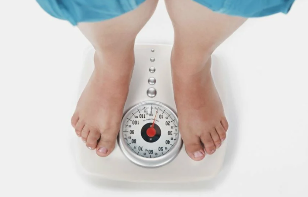Low back pain — chronic or recurrent, that occur on the background of constant degradation of the vertebrae and the intervertebral discs. Depending on the localization of the vertebrate structures that are exposed to degenerative changes, to distinguish between thoracic, lumbosacral sacralis pathology, and also the neck. The main symptoms of degenerative disc disease — the pain syndrome, the severity of which increases during exercise, the rigidity of the movements. The clinical picture is often present spinal symptoms: headache, the jump of the blood pressure, decrease in visual acuity and hearing.

The diagnosis will be issued on the basis of the results of instrumental examinations — x-ray, mri, CT. In the treatment of degenerative disc disease drugs are used in different clinical-pharmacological groups. In order to improve their clinical efficacy is perform massages and physiotherapy treatments. One of the main methods of therapy and prevention is the therapeutic exercise.
The mechanism of the development of the disease
At the base of the pathogenesis of degenerative disc disease is the loss of the nucleus pulposus to its hydrophilic property. This fluid is composed of connective tissue and fiber type of jelly substance. As they mature a man occurs a reduction of the vascular bed in each disc between the vertebrae. The arrival in it of nutrients takes place diffusely, that is, according to the principle of spontaneous alignment of the concentrations. This explains the impossibility of recovery of the cartilage tissue following injury or excess physical exercise on the vertebral column.
The processes of degenerative disc disease aggravate hormonal changes and an unbalanced diet. In the cartilage tissue does not get enough for their full operation and the amounts of nutrients, which results in the following violations of their structure and properties:
- lost strength and elasticity;
- changes the shape, texture and configuration.
The intervertebral discs are flattened, and the fibrous rings cracks form radial. This becomes a reason to reduce the distance between the vertebrae. Gradually in the pathological process involves the connective tissue fibrosis and rings, and ligaments. In response to the disintegration of the tissues of the immune system starts to produce immunoglobulins, which leads to aseptic inflammation and formation of edema of the joints and nearby soft tissues. Capsules of the joints are stretched, then the intervertebral disks stop to secure the vertebrae. And when instability of intervertebral segments increases the probability of violating the nerve root or compression of the blood vessel. This often happens when shane osteochondrosis and becomes the cause of its marked symptoms.
Causes and triggers
On the state of the intervertebral disc, negatively reducing the tone of skeletal muscle of the spine. Irrational, imbalances in muscle function occurs when the long-term presence of a person in the position is not physiological, for example, with the head down while working at the computer. Cause the destruction of the cartilage tissue can wear constant heavy bag on one shoulder, sleeping on a soft mattress and pillow top.
Accelerate the destruction of the intervertebral disc, the following internal and external negative factors:
- endocrine and metabolic disorders;
- infectious diseases, especially chronic;
- previous injuries to the spine (fractures, crushing, injury);
- frequent hypothermia;
- the presence of a system or of degenerative and dystrophic disease — gouty, psoriatic, rheumatoid arthritis, osteoarthritis, osteoporosis.

If a person has bad habits, is in the risk group. Smoking and alcohol abuse worsen the condition of blood vessels, which lead to poor blood circulation and lack of nutrients for the cartilage tissues of the discs.
In the presence of a flat foot or clubfoot, significantly increases the risk of developing osteoarthritis of any location. These congenital or acquired defects become the cause of increase in the load on the spine due to the inability to ensure the correct depreciation with the pillar. Predisposing to the onset of a disease factor is obesity.
When the deposition of adipose tissue in different parts of the body, more complicated support of the equilibrium, which leads to the excess of the loads for the joints, the intervertebral.
The clinical picture
Before the clinical manifestation of cervical, thoracic, or lumbar arthrosis — back pain. During the recurrence is permeating, radiating nearby parts of the body. The slightest movement leads to increased severity of the pain. A response of a person becomes the forced adoption state, in which the intensity of the uncomfortable feelings a minimum:
- people with neckband osteochondrosis prefer to rotate to the side of the head, and whole body;
- for breast disease the man has a fear of a complete breath, as well as becomes the cause of acute pain in the chest area;
- patients with lumbar osteochondrosis with difficulty sit down, stand up and go due to a violation of a spinal nerve.
Most patients complain about the doctor's stupid permanent pain and a sensation of stiffness of the movements in the morning. This requires additional differential diagnosis to rule out myositis (an inflammatory process in the skeletal muscles back pain) and osteoarthritis. The cause of the appearance of crybabies, crushing pain — movement compensatory tension in the muscle tissues to stabilize the affected spine-skeletal segment. Permanent syndrome of moderate or average severity occurs also due to a significant elongation of the intervertebral disc and the development of inflammation aseptic.
For the degenerative disc disease to a certain localization specific characteristic symptoms. For example, if lumbar spine pathology often occurs sciatica — attack of pain in the lumbar region and the back of the thigh. Thoracic back pain is manifested clinically visceral pain in the pit of the cardiac field, the right hypochondrium, heartburn, numbness, hypersensitivity of the skin, cracking in the vertebrae. But the most remarkable and varied symptoms, different condition which affects the neck, the intervertebral discs.
As A result of displacement of the vertebrae, formation of osteophytes squeezed the transmission of the spinal artery which feeds the brain cells, which provides them with oxygen. People who suffer from disorders of coordination of movements, tinnitus, headache, hypertension.
That may be, in the absence of treatment
Most of the complications of degenerative disc disease occur due to the formation of hernia of the intervertebral disc. It is formed during the movement of this spine structure is, which leads to the rupture of the posterior longitudinal ligament. The disk becomes more unstable, and part of it protrudes into the spinal canal. A is considered to be a hernia, if in the process of formation, together with the disk in the channel penetrates purposee nucleus.
It is a pathological condition of the vertebrate structures predisposes to compression of the spinal cord and the development of discogenic myelopathy. Clinically it is manifested torpor, weakness of some muscle groups of the legs or hands, paralysis, muscle atrophy, changes reflexes of tendons. Can also occur in disorders of bladder emptying and (or) of the intestine. Following the formation of the herniated disc compressed the arteries supplying the spinal cord. Form of ischaemic the areas in which they are the death of all the nerve cells. Occurs the so-called neurological deficit — violated movement, decrease the sensitivity, gets upset and trophic.

The tactic of treatment
Low back pain does not lend itself to complete healing, as well as non-synthesized drugs, the welcome that would help you to recover files damaged intervertebral discs and the vertebrae. But in the regimens included are necessarily chondroprotectors — symptomatic funds to watchmaking. Preference is given to drugs with active ingredients chondroitin sulfate and (or) with glucosamine sulfate (hydrochloride).
The clinical efficacy of these drugs is confirmed by the results of years of research. The chronic administration (from 3 months to 2 years) means of verification partial regeneration of cartilage tissue, and other connective tissue structures — ligaments, tendons, bourse. The accumulation of the intervertebral discs of glucosamine and chondroitin begin to provide the expressed analgesic, decongestant, anti-inflammatory. This allows to reduce the doses of NSAIDS, corticosteroids, muscle relaxants, reduce pharmacological stress on the body.
Medications to the joints are ineffective employment is irregular or their use for the treatment of degenerative disc disease 3 degrees, when you observe a significant destruction of the cartilage tissues.
For the resolution of symptoms usually occurs when the cervical or thoracic osteochondrosis, drugs are used to improve circulation, nootropics, the drug, improves microcirculation of the labyrinth, used in case of pathology of the vestibular apparatus.
If necessary, treatment regimens have included antidepressants, anticonvulsants.
In the treatment of degenerative disc disease apply treatments of physiotherapy: UHF-therapy, magneto-therapy, laser therapy. Are used in reflexology, massage, physical THERAPY, hirudotherapy, swimming, yoga. The ineffectiveness of conservative treatment, the patient indicated surgery. Practiced puncture the vaporization of the disc, the laser reconstruction or replacement of a system.
















